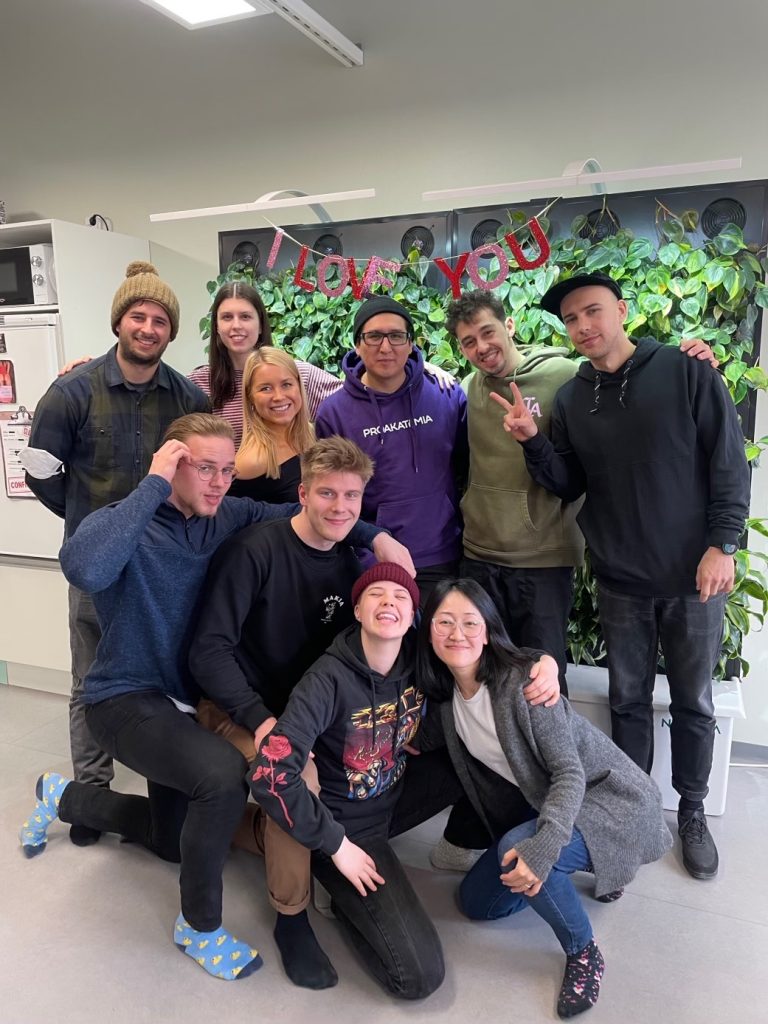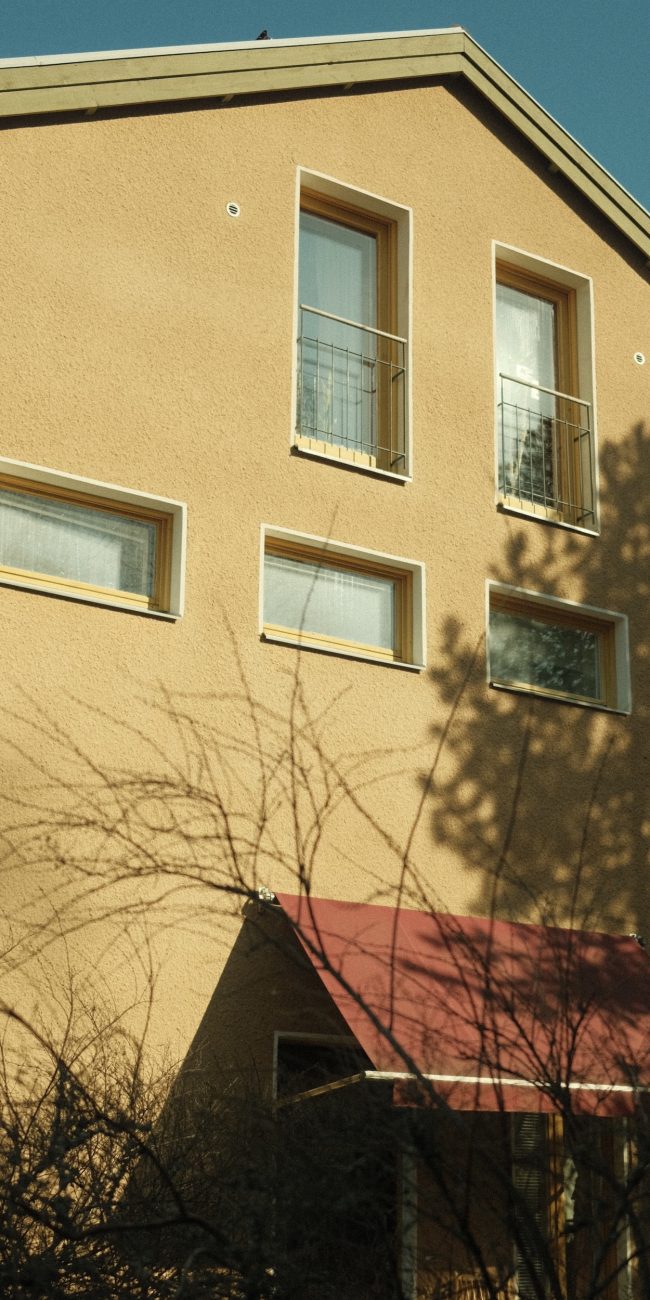
My Experience at Tiimiakatemia Jyväskylä
Esseen tyyppi: Yksilöessee / 2 esseepistettä.
Introduction
Last week during Flip’s Learning Journey, we had the opportunity to visit the Team Academy in Jyväskylä. Their program is the oldest team learning institution and the one Proakatemia was based off, so it was interesting to see the similarities and differences between the two programs. While visiting tiimiakatemia, we participated in a training session and received a short tour of their premises. We also had the chance to network with some of the teampreneurs and coaches present. In this essay, I plan on reflecting on my observations and what I learned in Jyväskylä.
Tour
A second-year student from Heiga organized a tour of the premises for Flip so that we had a better understanding of how they worked as a community. Their spaces were relatively small for a community with 150 members; however, every team had their own team space, and it was easy to chat with some of the students. One difference I noticed was that they only have two training session rooms that fit larger teams, whereas Proakatemia has closer to six.
During the tour, some students shared about their projects and how their company finances work. In Proakatemia, team companies are registered to pay their members’ salaries and most teams use an excel tool to track their finances and payments. Whereas in Jyväskylä they are not registered to pay salaries, and instead use outside companies such as UKKO to pay their members salary. It is much rarer for the teams in tiimiakatemia to pay salaries because each project has to give 30% of their earnings to their team company’s general account, which lessens the amount of profit to be paid as salary, for example. This came as a shock to me at least, because in Proakatemia most of the project teams are rather protective of their profit and do not mix it as much with their team company’s ‘tiimikassa,’ which is used to pay mökkipajas or events.
After the tour, I had the chance to discuss with the tiimiakatemia head coach, Anu Manner. She was interested in Proakatemia’s experience in the shift to becoming a more international and bilingual community. It was a valuable conversation and we were able to also compare the teams at Proakatemia and tiimiakatemia, and share the challenges both programs have faced during the Covid pandemic as well. Anu is a tiimiakatemia alumni as well and shared that she enjoyed her experience so much as a student that she was passionate about coming back as a coach to continue learning and helping new teams.
Training session
There were two different training sessions organized in the afternoon. One was in Finnish about working culture and the other one was held in English with the topic being working in an international community. I was able to join the Finnish training session along with three other members of Flip. The session was facilitated by Wiljami, a member from team Heiga.
The topic of working culture is familiar to me, as I have participated in similar pajas about the topic in Proakatemia. However, this training session was half theory based and half based on discussion which was appealing to me. The slides in the beginning mentioned Michael C. Bush’s company Great Place to Work, which was founded in 2015 with the purpose of consulting other companies to increase business productivity and positive experiences in the workplace.
The comparison between beneficial and poor working culture was a nice example and made it easier to apply my own experiences in working life. For example, a beneficial workplace has diversity, value, a sense of community, positive changes and results. Whereas a poor workplace only uses the boss’s ideas, has a lack of change, invisible workers, and the inability to learn from mistakes. One characteristic that brought up questions was the idea of young people being able to work somewhere. Ideally, a good workplace can keep young people there without boring them, where a poor workplace doesn’t interest them and can even turn them away.
I found it an interesting concept, because in the past, the older and more experienced an employee was, the more valued and respected they were. This also applies to their ideas or opinions. Whereas younger employees with less experience were often neglected and invisible. Although, in more modern companies and workplaces, young people are valued due to their understanding of the younger generation and new ideas that are unfamiliar to the older generations. A workplace that can engage its younger employees has a higher chance of success because they are willing to learn and change their methods to adapt to the constantly shifting market.
After the theoretical introduction to the topic, we were divided into two groups. One group focused on the team company Heiga’s working culture and the other group focused on a secondhand clothing store called Happy Second. I chose to participate in the discussion with Happy Second, as it gave me the opportunity to network with the project team, challenge their thoughts, and share my own experiences.
Happy Second has nine members in their project team, five are from Heiga and the other four are from first year teams. Their storefront location opened just 3 weeks ago and has been quite the rollercoaster to get everything finished on time. The team has project leads, a marketing group, financial lead and everyone works shifts doing customer service at their store.
The discussion was divided into two parts, with a set of questions first, and then a deeper analyzation of concepts such as values, direction, leadership, and overall understanding. Answering the first set of questions took up most of the group’s time because there was a lot of unresolved issues and miscommunications covered. One of the biggest challenges faced was their project team’s unbalanced priority of this specific project and the tasks involved with it.
I have rarely had the opportunity to challenge a project team, and more specifically an unfamiliar one where I was an outsider. By not understanding their project fully, it made it easier to ask simpler questions about their structure, leadership, and priorities. One thing I have noticed at Proakatemia, is that it is very important to have a discussion with an outsider to gain more perspective and hear other ideas that were never brought up or considered before. In Happy Second’s case, their hectic schedules and balance between working at the store and still studying at tiimiakatemia has brought on additional stress and miscommunications. However, after being able to challenge their thoughts and ask questions, I felt that I had a deeper understanding of their project and process.
One of the biggest things I learned while discussing with Happy Second was the importance of getting to know the members of the project team. In their case, having nine members where 4 are from first year teams can create confusion and make it difficult to work together. In a company that has the goal of producing results and developing, basic steps such as introductions and refreshment days with the team are essential to encourage conversation unrelated to the project. Prioritizing the basics of human connection and working together in a team are key to creating a more positive working culture with possibilities for everyone.
Conclusion
Visiting Tiimiakatemia was an intellectual and valuable experience that I hope to continue in the future. I learned a lot about their program and projects and encouraged Heiga and other teampreneurs to visit Proakatemia so that we can share our program with them further. I was also able to gain contacts that I can use for developing my own projects and look forward to meeting with a few of them again. Due to the pandemic, visiting and networking with other team academies in Finland has stopped, but I hope to restart the habit and visit other programs in the future to gain even more perspective and network more.
References
Bush, M.C. n.d. Great Place to Work: About Michael. Read 27.03.2022. https://www.greatplacetowork.com/michael-c-bush



